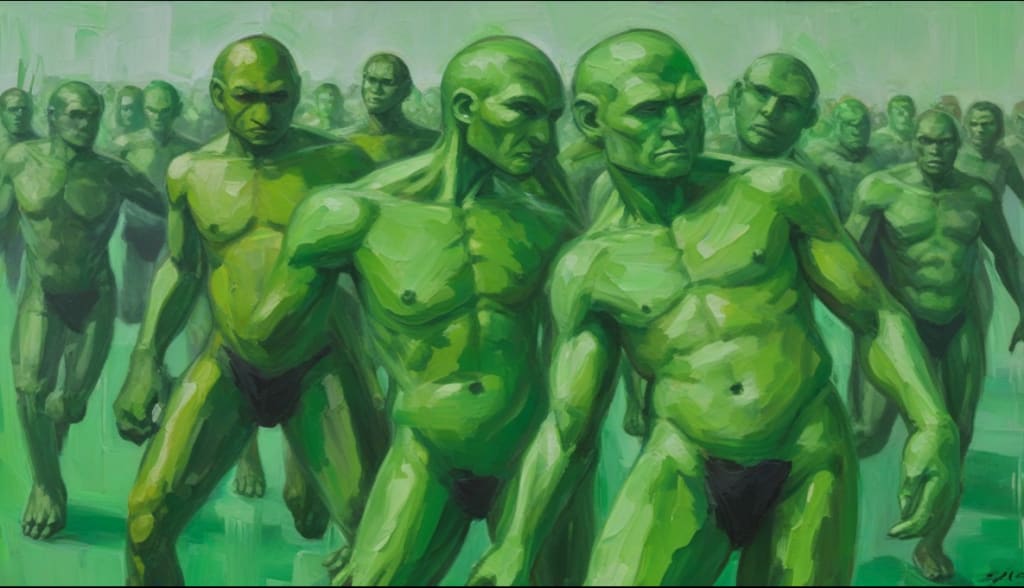
In the realm of speculative biology, the question of what if humans were cold-blooded introduces a cascade of intriguing possibilities. While the notion might seem far-fetched given our warm-blooded mammalian nature, contemplating the ramifications of such a hypothetical scenario unveils a tapestry of biological adaptations, behavioral shifts, and evolutionary consequences. Join us on an imaginative journey as we explore the chilling landscape of a world where humans are cold-blooded creatures.
1. The Basics of Cold-Blooded Physiology
Before delving into the speculative aspects, it's essential to understand the fundamentals of cold-blooded physiology. Unlike warm-blooded (endothermic) mammals, cold-blooded (ectothermic) creatures rely on external sources to regulate their body temperature. In this scenario, humans would require external warmth, such as basking in the sun or finding heated environments, to maintain optimal body functions.
2. Adapting to the Environment: Sun-Seeking Humans
In a world where humans are cold-blooded, our behavior and lifestyle would mirror those of reptiles and other ectothermic species. Sunlight would become a precious commodity, and individuals might find themselves seeking warmth in a manner reminiscent of lizards basking on rocks. The concept of a "solar break" could become an integral part of daily life, influencing work schedules, social interactions, and even architecture.
3. Energy Dynamics: The Trade-Off Between Activity and Temperature
Cold-blooded organisms often exhibit reduced metabolic rates in cooler environments, conserving energy for moments of activity. Applying this principle to humans could mean that our energy levels and activity patterns become intricately linked to environmental temperatures. The pursuit of warmth might drive behavioral cycles, with periods of high activity during warmer intervals and a more subdued pace in cooler conditions.
4. Seasonal Shifts in Behavior: Hibernation or Estivation?
The cold-blooded nature might introduce seasonal shifts in human behavior akin to hibernation or estivation observed in certain animals. During colder months, individuals could experience a slowed-down metabolism, reduced physical activity, and an increased reliance on stored energy. Conversely, warmer seasons might herald periods of heightened activity and engagement with the environment.
5. Social and Cultural Impact: Gathering Around Heat Sources
The centrality of warmth in a cold-blooded human existence would inevitably shape social structures and cultural practices. Communities might gather around heat sources, whether natural or artificial, fostering a sense of unity and shared warmth. Rituals and ceremonies could be designed around maintaining optimal body temperatures, marking significant moments in the cold-blooded human lifecycle.
6. Biological Evolution: The Cold-Blooded Advantage?
Exploring the evolutionary aspect of this hypothetical scenario raises questions about the potential advantages or disadvantages of a cold-blooded human lineage. Cold-blooded organisms often demonstrate remarkable adaptability to environmental changes, but they are also susceptible to temperature fluctuations. Over generations, selective pressures might favor individuals with efficient thermoregulation mechanisms, leading to the emergence of unique biological adaptations.
7. Technological Innovations: Heat-Centric Societies
In a world where humans are cold-blooded, technological innovations would likely revolve around heat-centric solutions. Advanced heating technologies, energy-efficient insulation, and climate-controlled environments could become the cornerstones of societal progress. The quest for warmth might drive scientific discoveries and engineering breakthroughs, reshaping the technological landscape.
8. Environmental Conservation: Protecting Vital Heat Sources
As warmth becomes a lifeline for human survival, environmental conservation efforts could shift focus towards preserving vital heat sources. Conservationists might advocate for the protection of sunlight-rich areas, geothermal regions, and other heat-emitting environments crucial for the well-being of cold-blooded humans. This reorientation of conservation priorities could have profound implications for biodiversity and ecosystem management.
9. Interactions with Warm-Blooded Species: Bridging the Thermoregulatory Gap
The coexistence of cold-blooded humans alongside warm-blooded animals, including fellow mammals, would necessitate unique adaptations for harmonious interactions. Strategies for bridging the thermoregulatory gap could include creating shared spaces with varied temperature zones, fostering mutualistic relationships with warm-blooded species, and developing innovative approaches to address the challenges of interspecies cohabitation.
10. Culinary Adaptations: Gastronomy in a Cold-Blooded World
The culinary landscape in a cold-blooded human society would likely reflect the importance of heat in maintaining bodily functions. Heat-centric cooking techniques, reliance on warm and spiced foods, and a cultural emphasis on thermally comforting meals could define the gastronomic preferences of this speculative civilization. Culinary traditions might intertwine with thermoregulatory needs, shaping unique and flavorful cuisines.
11. Challenges and Vulnerabilities: Navigating Temperature Extremes
While the cold-blooded adaptation offers certain advantages, it also introduces vulnerabilities associated with temperature extremes. Cold-blooded humans might face challenges during exceptionally cold or hot periods, requiring innovative strategies for coping with environmental fluctuations. Technological solutions and behavioral adaptations would play a crucial role in mitigating these challenges.
12. Ethical Considerations: Balancing Nature and Nurture
As we ponder the intricacies of a cold-blooded human existence, ethical considerations come to the forefront. Balancing the innate aspects of our hypothetical biology with societal values, ethical norms, and the potential impact on individual well-being raises complex questions. The interplay between nature and nurture would become a focal point for ethical discourse, shaping the moral fabric of this speculative world.
Conclusion: Imagining the Thermoregulatory Odyssey
In the speculative realm of what-ifs, envisioning humans as cold-blooded beings invites us to explore the depths of biological possibility and its far-reaching consequences. From the intricacies of daily life to the grand tapestry of evolution, the thermoregulatory odyssey of cold-blooded humans opens avenues for creativity, contemplation, and a deeper understanding of the delicate dance between organisms and their environments. While the warm-blooded nature of our reality remains steadfast, the exploration of such hypothetical scenarios sparks curiosity about the myriad ways life could unfold in alternate biological landscapes.
About the Creator
Kei Ben
A fresh read goes a long way.






Comments
Kei Ben is not accepting comments at the moment
Want to show your support? Send them a one-off tip.